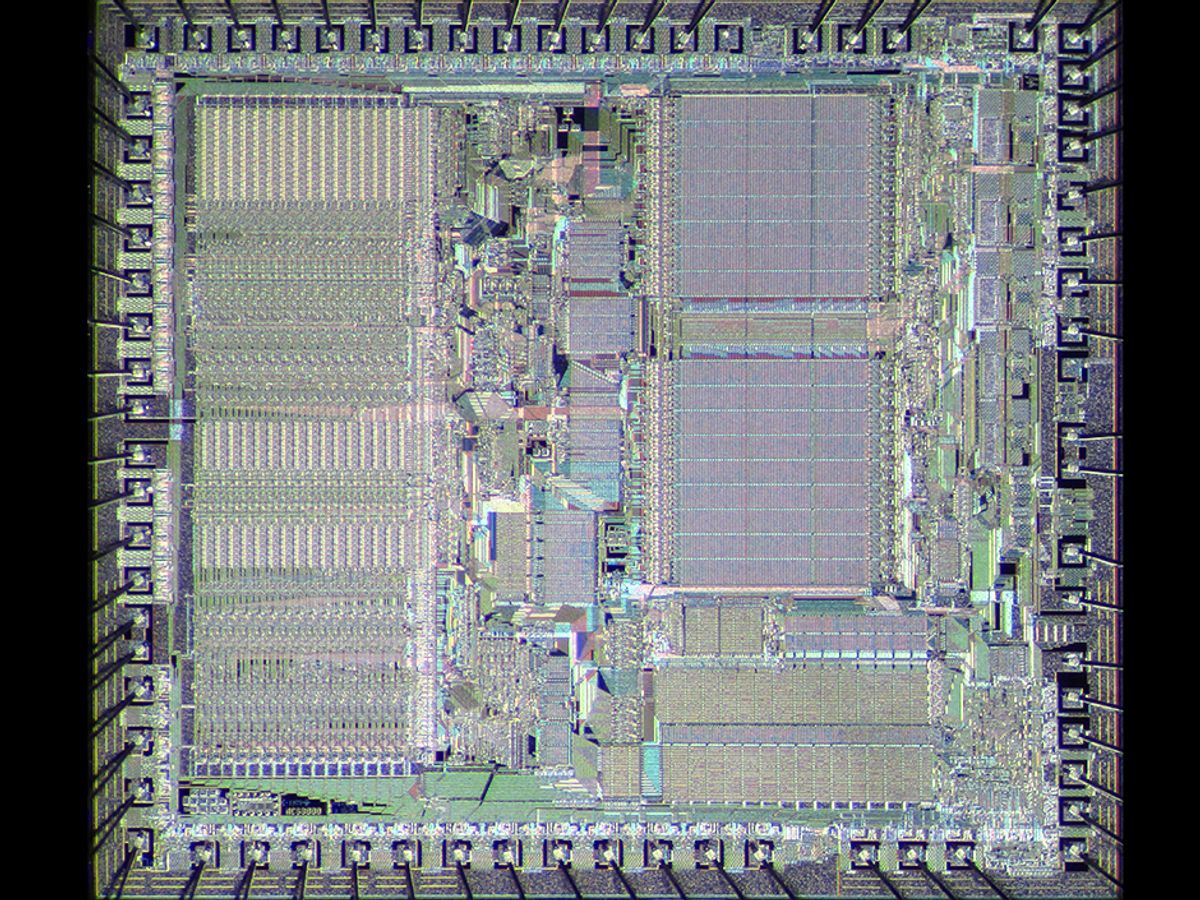Motorola was late to the 16-bit microprocessor party, so it decided to arrive in style. The hybrid 16-bit/32-bit MC68000 packed in 68,000 transistors, more than double the number of Intel’s 8086. Internally it was a 32-bit processor, but a 32-bit address and/or data bus would have made it prohibitively expensive, so the 68000 used 24-bit address and 16-bit data lines. The 68000 seems to have been the last major processor designed using pencil and paper. “I circulated reduced-size copies of flowcharts, execution-unit resources, decoders, and control logic to other project members,” says Nick Tredennick, who designed the 68000’s logic. The copies were small and difficult to read, and his bleary-eyed colleagues eventually found a way to make that clear. “One day I came into my office to find a credit-card-size copy of the flowcharts sitting on my desk,” Tredennick recalls. The 68000 found its way into all the early Macintosh computers, as well as the Amiga and the Atari ST. Big sales numbers came from embedded applications in laser printers, arcade games, and industrial controllers. But the 68000 was also the subject of one of history’s greatest near misses, right up there with Pete Best losing his spot as a drummer for the Beatles. IBM wanted to use the 68000 in its PC line, but the company went with Intel’s 8088 because, among other things, the 68000 was still relatively scarce. As one observer later reflected, had Motorola prevailed, the Windows-Intel duopoly known as Wintel might have been Winola instead.
Chip Hall of Fame: Motorola MC68000 Microprocessor
The processor that powered the original Macintosh, as well as the beloved Amiga computers
30 Jun 2017
1 min read

Photo: Pauli Rautakorpi




